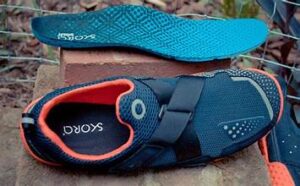
- Introduction to VKTRY Insoles
- The Role of Insoles in Sports Performance
- NBA Ban on VKTRY Insoles: Background Information
- NBA’s Decision to Ban VKTRY Insoles
- Reasoning Behind the Ban
- Impact on Players and Teams
- VKTRY Insoles: Technology and Benefits
- How VKTRY Insoles Work
- Benefits for Athletes
- Controversy Surrounding the Ban
- Reaction from Athletes and Coaches
- Legal Issues and Challenges
- Alternative Options for Athletes
- Other Performance-Enhancing Products
- Natural Methods for Improving Performance
- Conclusion
NBA Banned VKTRY Insoles: What You Need to Know
In the world of professional sports, athletes are constantly seeking ways to gain a competitive edge. From rigorous training regimens to cutting-edge technology, every advantage counts. One such innovation that caught the attention of many athletes and teams was VKTRY Performance Insoles. However, despite their popularity among athletes, the NBA recently made headlines by banning the use of VKTRY Insoles during games. Let’s delve deeper into this decision and what it means for players and teams.
Introduction to VKTRY Insoles
VKTRY Performance Insoles are a revolutionary product designed to enhance athletic performance. Created using aerospace-grade carbon fiber, these insoles are engineered to provide athletes with increased energy return, improved shock absorption, and enhanced stability. The technology behind VKTRY Insoles is based on years of research and development, aiming to optimize biomechanical efficiency and reduce the risk of injury.
The Role of Insoles in Sports Performance
Insoles play a crucial role in supporting the feet and optimizing biomechanics during physical activity. They help distribute pressure evenly, reduce impact on joints, and provide added support to areas prone to injury. For athletes, the right pair of insoles can make a significant difference in comfort, performance, and injury prevention.
NBA Ban on VKTRY Insoles: Background Information
NBA’s Decision to Ban VKTRY Insoles
The NBA’s decision to ban VKTRY Insoles came as a surprise to many within the basketball community. Despite their widespread use among players, the league cited concerns regarding competitive fairness and potential advantages gained from wearing the insoles.
Reasoning Behind the Ban
The NBA’s decision was rooted in maintaining a level playing field for all athletes. By prohibiting the use of VKTRY Insoles, the league aimed to prevent any undue advantages that could arise from the use of performance-enhancing equipment.
Impact on Players and Teams
The ban on VKTRY Insoles had significant implications for players and teams across the league. Many athletes who had integrated the insoles into their training and game-day routines were forced to adjust their footwear choices. Teams that had invested in VKTRY Insoles for their players also faced challenges in finding suitable alternatives.
VKTRY Insoles: Technology and Benefits
How VKTRY Insoles Work
VKTRY Insoles utilize a unique carbon fiber design that stores and returns energy with each step. This energy return technology helps athletes generate more power and explosiveness during movements, such as jumping and cutting.
Benefits for Athletes
The benefits of VKTRY Insoles extend beyond mere performance enhancement. Athletes who use these insoles often report reduced fatigue, improved comfort, and faster recovery times. Additionally, the added support provided by VKTRY Insoles can help alleviate common foot ailments and prevent injuries.
Controversy Surrounding the Ban
Reaction from Athletes and Coaches
The NBA’s ban on VKTRY Insoles sparked mixed reactions from athletes and coaches alike. While some supported the league’s decision in the interest of fairness, others voiced their frustration over being deprived of a product they believed contributed to their performance and well-being.
Legal Issues and Challenges
The ban on VKTRY Insoles also raised legal questions surrounding the regulation of performance-enhancing equipment in professional sports. As athletes and manufacturers explore their options, legal challenges may arise regarding the enforcement and interpretation of league policies.
Alternative Options for Athletes
Other Performance-Enhancing Products
In light of the ban on VKTRY Insoles, athletes may turn to alternative performance-enhancing products to gain a competitive edge. From compression garments to recovery aids, the market offers a variety of options for athletes seeking to optimize their performance.
Natural Methods for Improving Performance
While technology can offer significant benefits, athletes should also consider natural methods for improving their performance. Proper nutrition, hydration, rest, and training techniques play a crucial role in maximizing athletic potential and maintaining long-term health.
Conclusion
The NBA’s ban on VKTRY Insoles has ignited discussions about the role of technology in sports and the fine line between innovation and competitive fairness. As athletes and leagues navigate these challenges, the pursuit of excellence remains at the forefront. While VKTRY Insoles may no longer be permitted on the court, the quest for optimal performance continues through alternative means and advancements in sports science.

FAQs
- Why did the NBA ban VKTRY Insoles?
- The NBA cited concerns regarding competitive fairness and potential advantages gained from wearing the insoles.
- Are VKTRY Insoles still available for purchase?
- Yes, VKTRY Insoles are still available for purchase, but they cannot be used during NBA games.
- What alternatives do athletes have now that VKTRY Insoles are banned?
- Athletes can explore other performance-enhancing products or focus on natural methods for improving their performance.
- Can athletes challenge the NBA’s ban on VKTRY Insoles?
- While legal challenges may arise, the NBA’s decision to ban VKTRY Insoles is currently in effect.
- Will the ban on VKTRY Insoles affect other sports leagues?
- The impact of the NBA’s ban on VKTRY Insoles on other sports leagues remains to be seen, as each league may have its own policies and considerations.

